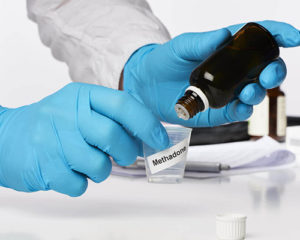There are several brand names associated with combinations of hydrocodone and acetaminophen. One of these is Norco, which was approved by the U.S. Food and Drug Administration (FDA) in 1997. The most famous brand name for the combination of acetaminophen and hydrocodone is Vicodin, but Norco is more likely to be prescribed these days because there is less stigma of substance abuse associated with the medication.
Still, it is a prescription opioid painkiller containing a large dose of acetaminophen — a nonsteroidal anti-inflammatory drug (NSAID), which is safe for over-the-counter use — and hydrocodone — an opioid analgesic and antitussive, which is one of the drugs primarily responsible for the modern opioid abuse and overdose epidemic.
Abuse of Norco
Before 2014, hydrocodone was a Schedule III narcotic painkiller, according to the U.S. Drug Enforcement Administration (DEA). This allowed doctors to prescribe the painkiller with a few available refills. Patients did not have to return once a month, after their opioid painkiller supply ran out, for another doctor’s visit.
With millions of prescriptions for hydrocodone-containing drugs, these substances were widely misused, abused, diverted, and stolen for nonmedical consumption at high rates. In October 2014, the DEA changed hydrocodone to a Schedule II substance.

Even after this change, many people still abuse hydrocodone or switch from it to heroin. Some people who are no longer able to acquire hydrocodone may go into withdrawal because they do not have access to a drug their body has become dependent on. In some cases, people who abuse drugs and do not want to anymore will try to quit on their own. This is generally not advised, as withdrawal symptoms can be uncomfortable and cravings can be very intense.
Trying to quit an opioid drug like Norco without medical supervision is more likely to lead to relapse and subsequent overdose.
The process to withdraw safely from Norco and related drugs is well understood and improving all the time. Access to medication-assisted treatments (MATs) is improving all around the United States, and rehabilitation programs have therapy options focused on changing behaviors related to opioid substances like Norco.
Before you enter detox, it is helpful to understand the opioid withdrawal process you may experience if you quit Norco.
The Process of Withdrawing From Norco Dependence
Opioid withdrawal happens in two stages.
Stage 1
Stage 1 begins about 12 hours after the final dose of Norco, as the drug is fully metabolized out of the body and the brain begins to attempt balancing its neurochemistry on its own. The first symptoms come on at this point.
They include:
- Anxiety, agitation, and restlessness
- Muscle aches
- Watering eyes
- Runny nose
- Excessive sweating
- Yawning
- Cravings for Norco
These symptoms usually last for one to three days. Their duration and severity depend on how much Norco was abused, how often daily, and for how long.
Stage 2
After three days, symptoms will peak. They may become more intense, or new symptoms may be added. This is Stage 2, and symptoms include:
- Abdominal cramps
- Appetite loss
- Nausea and vomiting
- Diarrhea
- Dilated pupils
- Cold chills
- Goosebumps
These symptoms may last for two to seven more days. The full Norco withdrawal process typically takes up to 10 days.
For many people, the experience will feel like having the flu. For some, however, Norco withdrawal symptoms can be so uncomfortable that, without social support and medical supervision, they could relapse back into substance abuse to make the symptoms stop.
In rare cases, typically among people who have attempted to quit Norco or other opioids several times and suffered a relapse, a condition called post-acute withdrawal syndrome (PAWS) might develop. Most PAWS symptoms are psychological. They include:
- Depression
- Difficulty concentrating
- Low energy levels
- Sleeping too much
- Poor sleep quality
- Anhedonia (inability to feel pleasure)
This condition may last for weeks or months after the individual has stopped abusing Norco. It is often described as “not feeling quite right,” with low-level depression and cravings being the main issues reported.
Changes to the brain’s serotonin system are reportedly the underlying mechanism leading to these symptoms. A French medical experiment found that chronic morphine exposure did not lead to serious physical withdrawal symptoms in mice, but after four weeks of abstinence from the drug, the mice showed social aversion and despair behaviors, indicating PAWS.
It may take longer for the brain’s mood-regulating neurotransmitters, especially serotonin, to heal after going through withdrawal from Norco. This makes detox and rehabilitation very important.
Medical Treatment to Ease Norco Withdrawal
If you struggle with Norco addiction, there are a few things to look for in a medical detox center. First, you have a choice between inpatient and outpatient detox treatment, just like with rehabilitation. Getting a diagnosis of addiction from a medical professional, like a physician, can help you determine how serious the addiction is, which can guide you toward outpatient or inpatient treatment options.
When you enter detox, a physician will use a scale to determine how serious your withdrawal symptoms are. The Clinical Opiate Withdrawal Scale (COWS) is one of the more often used surveys, which uses your physical status like heart and breathing rate, along with your self-reported symptoms, to determine if you need MAT.
Medication-Assisted Treatment (MAT)
Buprenorphine and methadone are the most commonly used medications for medication-assisted treatment (MAT). For people with opioid addiction, it is important to find programs that offer MAT. Not everyone who struggles with opioid addiction needs replacement medications like buprenorphine or methadone, or benefits from maintenance medications like naltrexone, but it is useful to have the option available if you need it.
Buprenorphine
Approved by the FDA in 2002, buprenorphine is a partial opioid agonist. As a result, it does not cause intoxication for people who have taken opioids previously, but it will attach to the opioid receptors in the brain to maintain stability and reduce the severity of withdrawal symptoms. Buprenorphine lasts for a long time, so individuals likely only need one dose every day or every two days. Because this drug is less prone to abuse than methadone, physicians can train in prescribing buprenorphine to specific populations, so the medication is much more widely available for outpatient treatment.
Methadone

During the opioid crisis in the 1970s and 1980s, methadone was the preferred treatment for people who struggled with heroin addiction. Unlike buprenorphine, methadone is a full opioid agonist, and some people abuse this long-acting narcotic to get high.
Because of the risks associated with methadone, specific clinics were set up to dispense tightly controlled doses of the drug; however, these clinics filled up, waiting lists were long, and methadone is strong enough that it is not an appropriate treatment for most people struggling with opioid addiction.
While it is still an important approach to MAT, it is no longer the preferred treatment to overcome Norco addiction; however, your doctor may recommend it if you abused Norco in large doses for a long time.
If you need a form of MAT, the physician at the detox program will also work with you to develop a tapering schedule. This means your dose of buprenorphine or methadone will be reduced a little bit each day, every few days, or every week, until your body no longer relies on opioids to feel normal.
Detox is an important first step in overcoming addiction, but it is important to follow the entire evidence-based treatment process. Enroll in a comprehensive addiction treatment program following detox. This is where you will learn the tools that will sustain you in recovery.
(August 29, 2017). Prescription Opioids. Centers for Disease Control and Prevention (CDC). Retrieved from https://www.cdc.gov/drugoverdose/opioids/prescribed.html
(October 2018). Hydrocodone. Drug Enforcement Administration (DEA), Diversion Control Division, Drug & Chemical Evaluation Section. Retrieved from: https://www.deadiversion.usdoj.gov/drug_chem_info/hydrocodone.pdf
(February 7, 2018). Medication-Assisted Treatment (MAT). Substance Abuse and Mental Health Services Administration (SAMHSA). Retrieved from: https://www.samhsa.gov/medication-assisted-treatment
(February 1, 2011). Opiate Abuse: Protracted Abstinence Revisited. Elsevier. Retrieved from: https://www.sciencedaily.com/releases/2011/02/110201083930.htm
(April-June 2003). Clinical Opiate Withdrawal Scale. National Institute on Drug Abuse (NIDA). Retrieved from: https://www.drugabuse.gov/sites/default/files/files/ClinicalOpiateWithdrawalScale.pdf
(May 31, 2016). Buprenorphine. Substance Abuse and Mental Health Services Administration (SAMHSA). Retrieved from: https://www.samhsa.gov/medication-assisted-treatment/treatment/buprenorphine
(September 28,2015). Methadone. Substance Abuse and Mental Health Services Administration (SAMHSA). Retrieved from: https://www.samhsa.gov/medication-assisted-treatment/treatment/methadone


